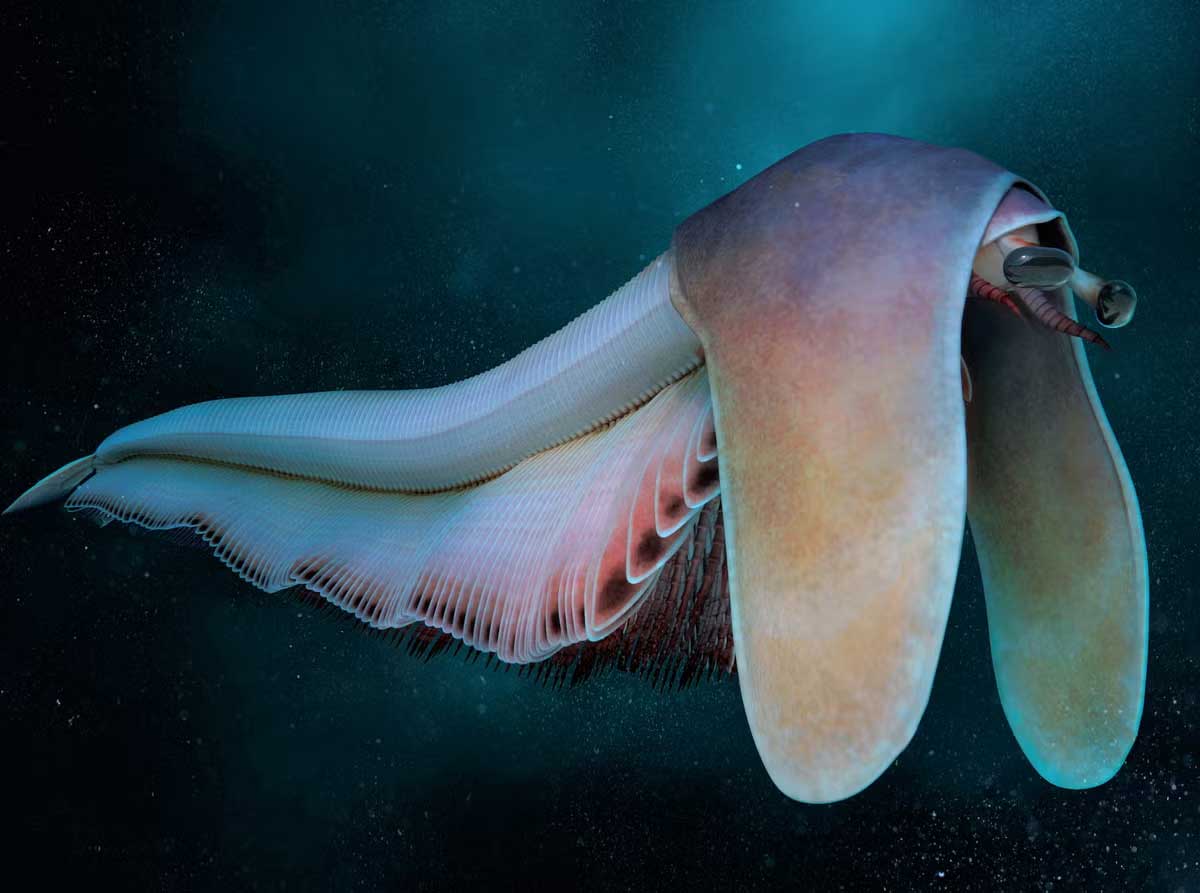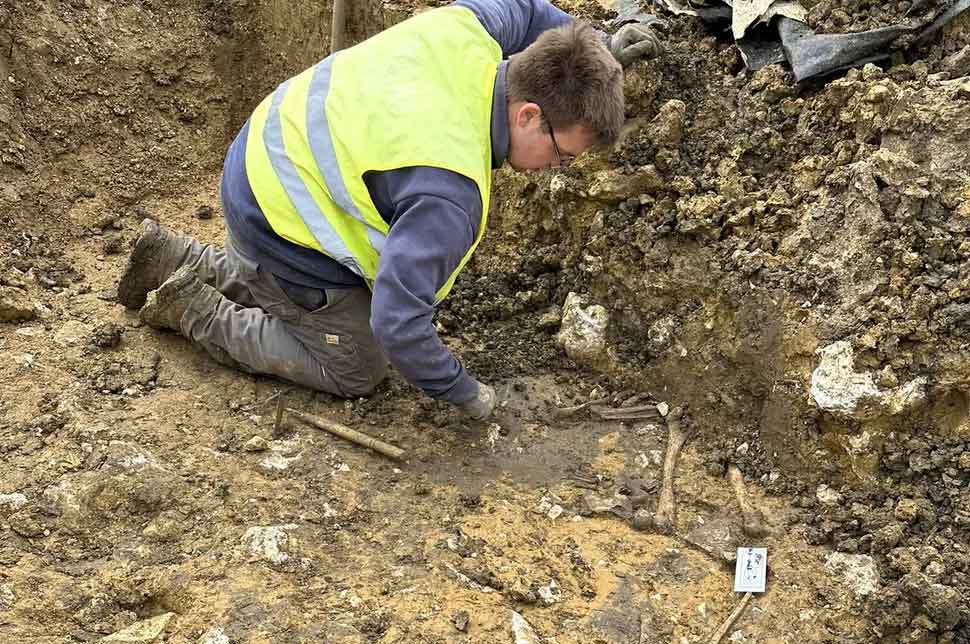New research suggests that all life today descended from a cell that lived 4.2 billion years ago, just a few hundred million years after the Earth formed. This last universal common ancestor, affectionately nicknamed LUCA by biologists, wasn’t all that different from the fairly complex bacteria that exist today — and it lived in an ecosystem teeming with other life and viruses.
“What’s really interesting is that it clearly had an early immune system, which shows that even 4.2 billion years ago our ancestor was in an arms race with viruses,” Davide Pisani, a genomics researcher at the University of Bristol in the UK and a co-author of the new study, said in a statement.
All cellular life on Earth shares certain key features: it uses the same protein building blocks, it all uses the same energy currency to power its cells (ATP), and all cells use DNA to store information. These common features are unlikely to be a coincidence; they all indicate that life as we know it today comes from a single source.
Before this study, scientists estimated that LUCA lived 3.9 billion years ago. However, accurately dating genetic events that happened that long ago is challenging.

Illustration of how LUCA was already attacked by viruses 4.2 billion years ago. Science Graphic Design
In a new study published July 12 in the journal Nature Ecology & Evolution, the researchers sought to pinpoint LUCA’s origins more precisely. The team compared all the genes in 700 living species of bacteria and archaea (microbes that are similar to bacteria and often live in extreme conditions). They chose organisms in these domains because they are considered the oldest forms of life, and eukaryotes evolved from a union between both cell types. The researchers then counted the mutations that have occurred over time in the genomes and in the 57 genes common to all 700 organisms, using the estimated mutation rates to back-calculate LUCA’s lifetime. They bolstered their age estimate by using fossils containing traces of ancient life, such as the remains of 3.48-billion-year-old microbial mats from Australia. The ancient fossils gave them insight into the atmospheric conditions of early Earth and provided a lower estimate of when LUCA might have survived.
This allowed us to establish that LUCA lived approximately 4.2 billion years ago.
“We didn’t expect LUCA to be so old, given that it formed only hundreds of millions of years after the Earth formed,” said co-author Sandra Alvarez-Carretero, a research fellow at UCL in the UK. At that time, during the Hadean (4.6 to 4 billion years ago), Earth was an inhospitable place with hot oceans and very little oxygen in the atmosphere.

Additionally, by sorting genes based on their cellular function, the researchers could tell something about how and where LUCA lived and what it ate. Their analyses did not pinpoint LUCA’s exact habitat, but suggested it likely lived in an ocean environment, a shallow hydrothermal vent, or a hot spring. They also found that LUCA likely could tolerate extreme temperatures and “breathe” without oxygen, instead relying on the waste of others that shared its ecosystem.
Evidence that LUCA was not alone comes from a reconstruction of LUCA’s metabolic pathways. This suggests that LUCA could have used organic material that had already been broken down by other microbes to generate energy. Further supporting evidence comes from the surprising result that LUCA was already equipped with genes that could help defend against infectious viruses.
The fact that LUCA was already living in a thriving ecosystem has interesting implications for life on other planets, senior study author Philip Donoghue, a professor of palaeobiology at the University of Bristol, said in a statement.
“This suggests that life can thrive in Earth-like biospheres elsewhere in the universe,” Donoghue said.
One team of scientists found that the last universal common ancestor of life may have existed about 4.2 billion years ago, while another study suggested that deep-sea polymetallic nodules could have been another source of life-sustaining oxygen, in addition to the light-driven photosynthetic processes near the planet’s surface.
Now, another new study (led by scientists from Cardiff University) further complicates the timeline of the early Earth, suggesting that the first forms of complex life actually emerged in the Palaeoproterozoic era – some 1.5 billion years earlier than previously thought.
Ernest Chi Fru, who led the study, said the life forms likely formed in a “nutrient-rich laboratory” in a sedimentary geological region known as the Franceville Basin, located in what is now Gabon. The findings were published in the journal Precambrian Research.
“We believe that submarine volcanoes that followed the collision and stitching of the Congo and San Francisco cratons into one main massif further restricted and even cut off this patch of water from the global ocean, creating a nutrient-rich shallow inland sea,” Chi Fru said in a press release. “This created a localized environment where cyanobacterial photosynthesis was abundant for long periods of time, oxygenating the local seawater and creating a large food resource.”

While the Cambrian explosion is often touted as the amazing geological event that gave rise to complex life on Earth (and it certainly was), scientists know that multicellular life existed in the preceding Ediacaran period in the form of tubular, leaf-shaped organisms. In an interview with the BBC, Chi Fru described his hypothetical multicellular life forms as more like today’s mindless slime molds.
The main evidence pointing to this early “laboratory” of life is chemical analysis of sediment cores drilled into a basin in Gabon. The team suggests that the high levels of oxygen and phosphorus present in these cores may have arisen from volcanic activity caused by the collision of two plates – the Congo and São Francisco cratons. While the rest of the world was too nutrient-poor to support complex life at the time, these conditions, argues Chi Fru, “provided enough energy for increased body size and more complex behavior” and presented an incredible opportunity for multicellular life to gain its first foothold on Earth.
However, according to Chi Fru, this first chance for complex life to emerge was short-lived – the less than hospitable environment surrounding this closed inland sea limited the growth of these life forms and reduced their ability to achieve global dominance.
But the Franceville Basin has a long history of controversy. The first “fossils” indicating complex life in the basin were discovered in 2008, and since then other scientists have put forward theories suggesting that the samples were simply abiotic pyrite crystals formed by diagenesis — the physical and chemical changes in sedimentation found when water and rock interact.
Scientists are similarly wary of Chi Frue’s findings. For example, Graham Shields, a geologist at University College London, told the BBC that even if the pool did contain more nutrients than normal 2.1 billion years ago, that is not necessarily enough to suggest that multicellular life was born then.
A new study suggests that ancient L-shaped bacteria could explain strange microfossils found in some of the world’s oldest rocks. Microfossils found around the world contain specimens that don’t look like modern cells.
A new study, by analyzing some Dead Sea bacteria that lack cell walls, puts forward a theory about how these strange microfossils came to be. While this insight helps illustrate some of the strange morphologies of these fossils, it is not definitive proof that this is how life on Earth began.
Microfossils tend to confuse our timeline of when life formed on Earth. As their name suggests, these ancient rocks contain tiny fossilized remains of protozoa and bacteria, and when University of Wisconsin-Madison geologist Stanley Tyler discovered the first microfossils in Precambrian rocks in 1953, it pushed back the origin of life by more than a billion years.
Fast forward 70 years, and new microfossils have pushed that timeline back well into the Archean eon. Most assume that the first cells were probably simpler than the 1-2 micrometer-wide bacteria we have today, which lack internal structures like eukaryotes. However, the cells found in these sediments — some of which are about 3.8 billion years old — don’t support that assumption.
Instead, these ancient microfossils, which have been found in areas around the world, can be up to 70 micrometers across and support internal structures. This inspired Dheeraj Kanaparthi, a scientist at the Max Planck Institute for Biochemistry in Munich, Germany, to ask the age-old question: Why?
“These fossils look too complex,” Canaparthi told New Scientist. He published a peer-reviewed preprint in the journal eLife. “They’re also too big. What we find is always puzzling.”
Oddly enough, he found clues to an explanation while investigating freshwater springs located at the bottom of the extremely salty Dead Sea. These structures were first discovered in 2011 during the first ever diving expedition to the Dead Sea, and despite the body of water’s name, they encountered a range of microorganisms around these springs. Some of the bacteria in this unique ecosystem exhibited strange shapes compared to other bacteria, and that’s because they were actually L-forms.
Named after the Lister Institute in London, which discovered them in the 1930s, these L-forms have one specific characteristic that sets them apart from other bacteria: they lack a cell wall. Normally, these cells swell and burst due to osmosis (it turns out cell walls are very important in this regard), but under certain special conditions, they can survive and grow.
It was previously thought that these L-forms might have served as a template for protocells on ancient Earth, but Canaparthi and his colleagues show that the shapes created by these L-forms, when placed in the high-salinity environments that scientists think existed along coasts during the Archean, begin to resemble the microfossils found in these ancient rocks.
Canaparti and his team also argue that the internal structure of these microfossils is actually just an illusion created by new cells forming through L-shapes.
Of course, if you look around today, you’ll see that not having a cell wall isn’t exactly a winning evolutionary strategy, and that would have been true for these hypothetical ancient L-forms, too. They would have been “at the mercy of their environment,” Canaparti told New Scientist, and wouldn’t have been very efficient at reproducing.
It’s just a theory that tries to explain the different morphologies found in microfossils around the world. Because it’s difficult to truly replicate the conditions of Paleoarchean Earth or capture its global variability, there’s a lot that’s unknown about that time, but L-forms could be a first step in solving the long-standing mystery of why these microfossils don’t quite match our understanding of life and how it formed.







